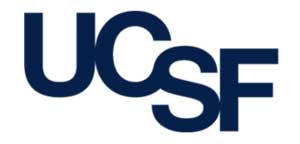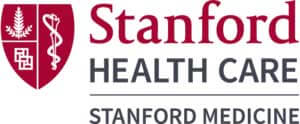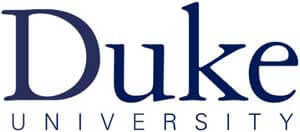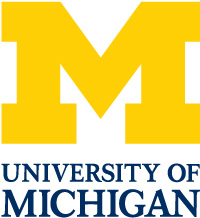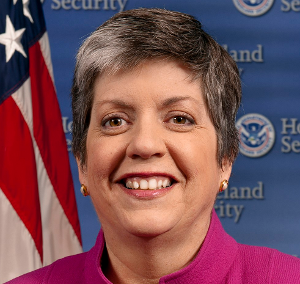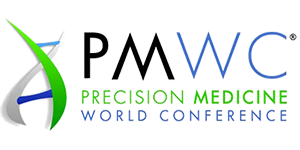Dr. Phelps is the inventor of the Positron Emission Tomography (PET) scanner. With UCLA colleagues and students, he developes in vivo biochemical assays for PET to provide molecular imaging diagnostics of the biology of disease. Dr. Phelps is a member of the National Academy of Science and the National Academy of Medicine, published 720 peer-reviewed articles and 4 textbooks, and has been the principal investigator of $245 million in grants. He has received recognition for his scholarship, such as George von Hevesy Prize, Chaired the 1983 Nobel Symposium; S. Weir Mitchell Award, Academy of Neurology; Rosenthal Foundation Award, American College of Physicians; the Enrico Fermi Presidential Award by President Clinton; Kettering Prize, General Motors Cancer Research Foundation; gave the Keynote Address, 2007 Nobel Symposium. Read his full bio.
Interview with Michael Phelps of UCLA
Q: You invented the PET scanner that changed the lives of millions of patients with cancer, brain and heart diseases. What are the potential benefits to patients of combining PET with radio-ablation technologies?
A: PET provides imaging assays of the biology of disease in many diseases today. It provides these assays with imaging probes in near massless amounts – tracers – that do not impose any significant mass effects on patients nor the biological process being assayed. About 60 million clinical PET studies have been performed without a reported complication due to the imaging probe.
While there is an ever-increasing diversity in PET imaging probes and assays they provide, more recently, there has been an increase in assays demonstrating the capability to phenotype cancer cells in patients to determine whether the protein targets for radioablation are expressed on the cancer cells. This approach is referred to as Theranostics, in which the probe is labeled with a radioisotope for PET imaging, and the same probe is labeled with long-lived radioisotopes that emit beta or alpha particles for radio-ablation of cancer cells. These diagnostic- therapy combinations have moved from pre-clinical research to clinical trials to clinical practice with remarkable therapeutic benefit for patients. These probes are small peptides, small molecules, and antibodies. In both cases, the probe is injected IV and travels throughout all tissues of the body to locate and bind to the target protein for imaging or treatment. For example, prostate cancer cells express the Prostate Specific Membrane Antigen (PSMA) that is targeted with PET imaging to select patients for treatment with 177Lu or 225Ac labeled probe. Patients without the target do not qualify for the treatment. After treatment, PET imaging is used to determine if the cancer cells have been ablated. Thus, PET imaging of target expression provides measurement for stratification of patients for radioablation treatment.
If one uses a signal (responders) to noise (nonresponders) analysis to assess the relative number of patients needed in a therapy trial where a molecular diagnostic is used to enrich the patient population in responders, the following relative advantage can be achieved:
If the patient population has 20% responders (normal for treatment trials), 100 patients are required for the therapy trial.
If a molecular diagnostic provides enrichment to 40% responders, 25 patients are required.
If a molecular diagnostic provides enrichment to 80% responders, 7 patients are required.
This reduces the cost and time for trials by these same factors, and spares exposure of patients to risk of the therapeutic without adding value to the trial. Of course, this same benefit is realized by integrating the molecular diagnostic and therapeutic in-patient care. Theranostics demonstrates this realization in trials and patient care.
Q: Immunotherapy agents are rapidly changing the standard of care in cancer. How can PET immuno-oncology imaging be used to improve cancer care?
A: Immunotherapeutics are fundamentally different from other treatment modalities because they involve the patient’s immune system. PET provides two key advantages – the capability to detect very specific molecules (such as the CD markers on immune cells, or specific nutrients/metabolites intrinsic to immune system activation), along with the ability to examine all cells throughout the body of patients for these target molecules.
PET imaging of glycolysis with [18F]deoxyglucose (FDG) is fundamental to differentiating health and disease because of the defining importance of glucose metabolism, as well as assays for specific diseases (e.g. cancer, Alzheimer’s, etc.). There are, however, many specific diagnostic – treatment decisions requiring assays of specific biological processes.
Immunotherapeutics represent one of many examples requiring specific PET imaging assays to answer specific clinical questions that define treatment selection and assessment of treatment responses. This area of PET imaging is called ImmunoPET. Novel PET probes for immunotherapeutics include nucleoside analogs for assessing shifts in metabolism that occur preferentially in just the immune cells. Another class of tracers are immunoPET probes, based on antibodies or engineered antibody fragments (e.g., minibodies & diabodies) that detect specific markers on key cells such as the CD8 cytotoxic T cells that directly kill tumor cells. This area of ImmunoPET imaging is being used to assess the checkpoints that block immune responses, as demonstrated by groups in Europe using radiolabeled versions of the FDA-approved drugs nivolumab and atezolizumab.
Importantly, using newer PET probes to detect specific immune cell types, or assess molecular markers of immune system activation, can provide a faster and much more specific readout as to whether an immunotherapy is working, compared to current clinical imaging which focuses on non-specific assessment of tumor size (e.g., CT & MRI cannot differentiate malignant, necrotic & edematous tissues). The availability of specific readouts of immune system activation can help physicians and patients determine which immunotherapies to use, and how well they are working.
Q: What are the current challenges and opportunities for PET technological advances in clinical and preclinical imaging?
A: The greatest challenge for providing the unique PET molecular imaging of the biology of disease is to overcome dogma and fixed beliefs. The dogma in medical imaging is still that imaging tumor lesions is more relevant than PET molecular imaging assays of the biology of disease, and as being demonstrated in Theranostics, imaging tumor phenotypes and ImmunoPET imaging, as well as enzyme assays of many metabolic processes. This is evidenced by the insistence of regulatory bodies that sill use non-specific lesion size changes (e.g., lesions in cancer can increase in size during treatment due to necrosis (cell death) that are mistakenly judged as a treatment failure) as outcome markers in cancer therapy trials. This needs to be changed to use PET molecular imaging of the biological processes of disease and phenotyping of cancer cells through the body. Disease is a biological process and treatments are fundamentally designed to modify or terminate the biology of disease. Today, almost all PET scanners are PET/CT or PET/MRI that can simultaneously provide both the biological and traditional sizing of lesions.
Because of the risk of therapies, clinical trials must begin at the latest, and most complex stage of disease that is most difficult to treat. New in vivo and in vitro molecular diagnostics informative of the critical and controlling phenotypes of disease provide the means to lead therapeutics to earlier and less complex stages of disease where treatment can be more effective, and as discussed above, to enrich the patient population with responders with all the benefits this provides.
PET imaging assays have the capability to interrogate all cells throughout the body of patients for the expression of therapeutic targets to provide an informative and productive benefit in developing more effective therapies, and providing direct measures of their pharmacologic effectiveness.
Q: Can you give some examples how PET technology has helped in the development of new pharmaceuticals?
A: There are many and growing examples of the informative value of PET molecular imaging of the biology of disease in the development and use of new therapeutics. An illustrative example of the many attributes provided by PET are in the use of labeled peptides, small molecules, and antibodies to phenotype tumor cells of patients for radioablation of cancer, as discussed above. For example, 68GA-DOTATATE is used with PET for targeting cancer cells expressing the somatostatin receptor that are treated with therapeutic analogue 177Lu-DOTATATE with remarkable therapeutic benefit that has now been FDA approved and reimbursed. Following this are diagnostic and therapeutic combinations for prostate cancer targeting PSMA in FDA trials, although already used in patient care in Germany and Australia. These Theranostic results will be presented.
There is an ever-increasing world-wide growth in academic and commercial Theranostics, including ~ $6B in acquisitions of Theranostics companies by pharmaceutical companies over the last year.
There is, however, ever increasing progress in integrating in vivo and in vitro molecular diagnostics of the biology of disease with therapeutics that target critical proteins of disease to guide the discovery and development of therapies, and to bring them integrated together into the practice of medicine.
The Precision Medicine World Conference (PMWC), in its 17th installment, will take place in the Santa Clara Convention Center (Silicon Valley) on January 21-24, 2020. The program will traverse innovative technologies, thriving initiatives, and clinical case studies that enable the translation of precision medicine into direct improvements in health care. Conference attendees will have an opportunity to learn first-hand about the latest developments and advancements in precision medicine and cutting-edge new strategies and solutions that are changing how patients are treated.
See 2019 Agenda highlights:
- Five tracks will showcase sessions on the latest advancements in precision medicine which include, but are not limited to:
- AI & Data Science Showcase
- Clinical & Research Tools Showcase
- Clinical Dx Showcase
- Creating Clinical Value with Liquid Biopsy ctDNA, etc.
- Digital Health/Health and Wellness
- Digital Phenotyping
- Diversity in Precision Medicine
- Drug Development (PPPs)
- Early Days of Life Sequencing
- Emerging Technologies in PM
- Emerging Therapeutic Showcase
- FDA Efforts to Accelerate PM
- Gene Editing
- Genomic Profiling Showcase
- Immunotherapy Sessions & Showcase
- Implementation into Health Care Delivery
- Large Scale Bio-data Resources to Support Drug Development (PPPs)
- Microbial Profiling Showcase
- Microbiome
- Neoantigens
- Next-Gen. Workforce of PM
- Non-Clinical Services Showcase
- Pharmacogenomics
- Point-of Care Dx Platform
- Precision Public Health
- Rare Disease Diagnosis
- Resilience
- Robust Clinical Decision Support Tools
- Wellness and Aging Showcase
See 2019 Agenda highlights:
- Five tracks will showcase sessions on the latest advancements in precision medicine which include, but are not limited to:
- AI & Data Science Showcase
- Clinical & Research Tools Showcase
- Clinical Dx Showcase
- Creating Clinical Value with Liquid Biopsy ctDNA, etc.
- Digital Health/Health and Wellness
- Digital Phenotyping
- Diversity in Precision Medicine
- Drug Development (PPPs)
- Early Days of Life Sequencing
- Emerging Technologies in PM
- Emerging Therapeutic Showcase
- FDA Efforts to Accelerate PM
- Gene Editing / CRISPR
- Genomic Profiling Showcase
- Immunotherapy Sessions & Showcase
- Implementation into Health Care Delivery
- Large Scale Bio-data Resources to Support Drug Development (PPPs)
- Microbial Profiling Showcase
- Microbiome
- Neoantigens
- Next-Gen. Workforce of PM
- Non-Clinical Services Showcase
- Pharmacogenomics
- Point-of Care Dx Platform
- Precision Public Health
- Rare Disease Diagnosis
- Resilience
- Robust Clinical Decision Support Tools
- Wellness and Aging Showcase
- A lineup of 450+ highly regarded speakers featuring pioneering researchers and authorities across the healthcare and biotechnology sectors
- Luminary and Pioneer Awards, honoring individuals who contributed, and continue to contribute, to the field of Precision Medicine
- 2000+ multidisciplinary attendees, from across the entire spectrum of healthcare, representing different types of companies, technologies, and medical centers with leadership roles in precision medicine


